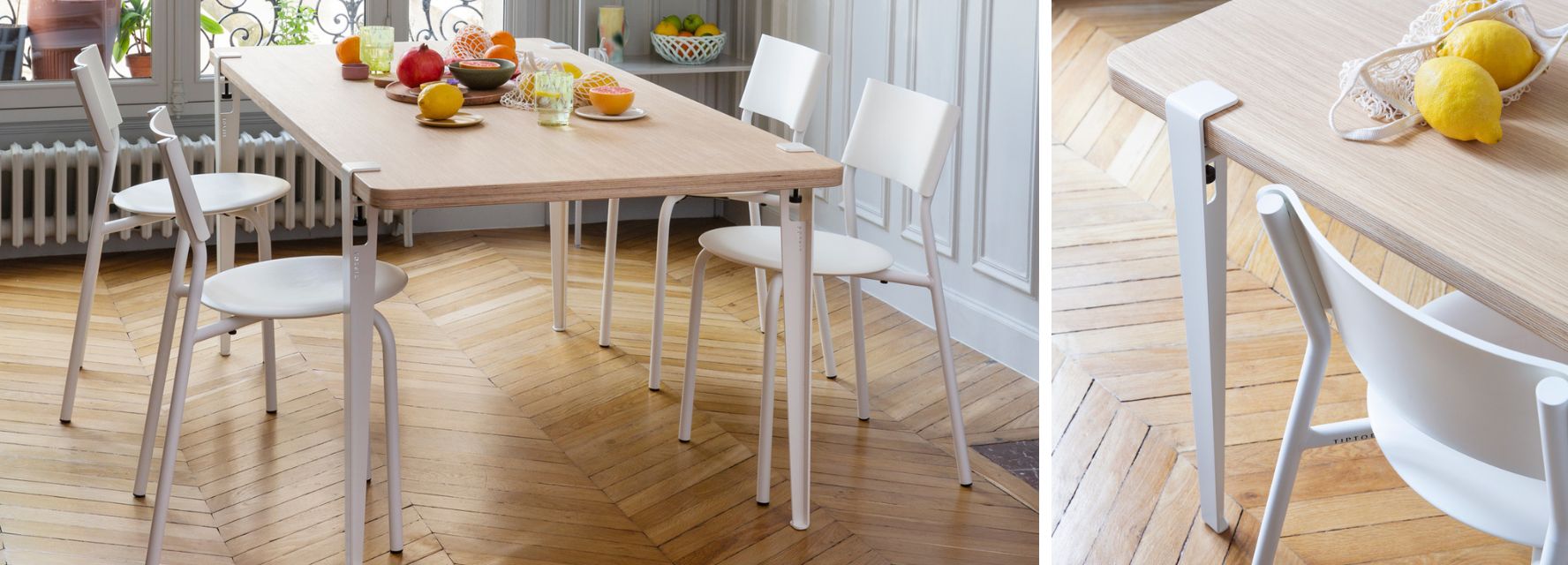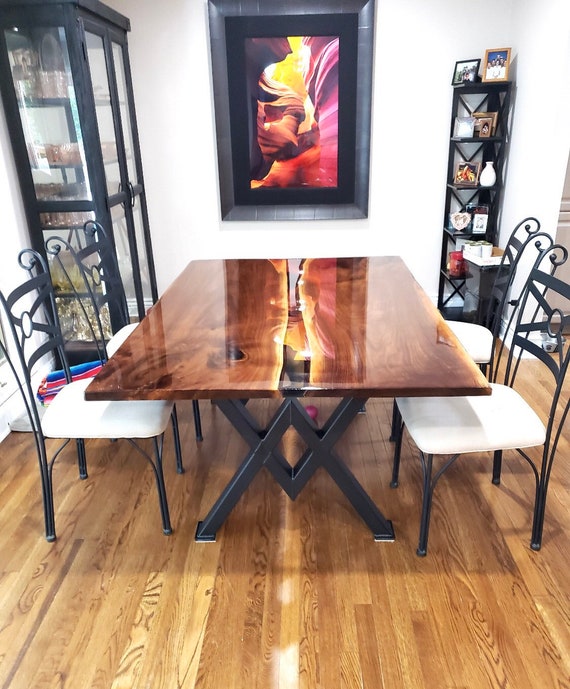How to Choose the Perfect Dining-room Table Legs for Your Home Decoration
Selecting the ideal dining area table legs is a nuanced procedure that calls for mindful consideration of different elements, including your room restraints, visual choices, and functional requirements. The interplay between designs, materials, and dimensions can dramatically affect the setting of your eating location, making it essential to approach this decision systematically.
Assess Your Dining Room
Examining your dining space is vital for picking the right table legs that match both aesthetic appeals and functionality. Begin by gauging the measurements of your dining location, consisting of ceiling elevation, flooring area, and proximity to other furnishings. This info will aid identify the suitable dimension and height of your dining table, which directly affects the option of table legs.
Next, consider the design and design of your eating area. An open-concept design might benefit from table legs that provide aesthetic lightness, such as slim metal or acrylic alternatives. On the other hand, an extra conventional setup may ask for durable wood legs that offer a feeling of permanence.
Evaluate the existing color combination and products in your eating area. Balancing the table legs with these aspects develops a cohesive look that improves the general style.
Inevitably, a comprehensive evaluation of your eating room will guide you in making a notified choice, making certain that your table legs not just enhance the visual appeal however also offer sensible objectives.
Consider Your Design Preferences
When picking dining-room table legs, it is vital to show on your individual design choices, as they substantially affect the overall aesthetic of your dining space. Your choice of table legs can either complement or contrast with existing decoration, making it essential to align them with your recommended interior decoration motif.
If your home leans towards a modern visual, consider streamlined metal or minimal wooden legs that supply a tidy, minimalist appearance. For a much more standard strategy, elaborate wooden legs with complex carvings can add a touch of sophistication and refinement. Industrial styles gain from durable, resources such as redeemed timber and metal mixes, reflecting a rugged beauty.
Furthermore, farmhouse and rustic styles frequently favor strong, beefy legs that stimulate a sense of warmth and comfort. On the other hand, if your decor is diverse, you may select unconventional forms or a mix of products to develop aesthetic rate of interest.

Evaluate Product Options
The choice of material for eating area table legs plays an essential function in both resilience and aesthetic allure. Common products consist of timber, steel, and composite alternatives, each offering distinctive attributes that can affect the general appearance and durability of your table.
Timber is a traditional selection, understood for its heat and flexibility. Hardwoods like oak and walnut provide remarkable strength and can be ended up in numerous stains to match any decoration. Nevertheless, softwoods like want are much more prone to scratches and dents, making them much less excellent for high-traffic locations.
Metal legs, often crafted from steel or light weight aluminum, exhibit modernity and industrial charm. They are immune and very sturdy to put on, official source making them appropriate check out here for households with kids or frequent celebrations (dining room table legs). Additionally, steel can be completed in numerous colors, boosting the personalization opportunities
Composite materials, such as MDF or laminate, offer affordability and varied layouts. While typically less sturdy than strong wood or metal, they can still give a fashionable appearance and are typically very easy to preserve.
Ultimately, the product you choose must straighten with your lifestyle, visual choices, and the degree of use your eating table will experience.
Determine Height and Dimension
Selecting the proper elevation and dimension for your eating area table is necessary for both capability and comfort. The typical height for dining tables generally varies from 28 to 30 inches, allowing enough legroom for the majority of individuals when seated. Nevertheless, it is essential to take into consideration the measurements of your eating area and the types of chairs you plan to utilize.
Moreover, consider the percentages of your dining-room. A larger table in a spacious area can produce a grand atmosphere, while a smaller table works well in more intimate settings. Eventually, the appropriate elevation and size will integrate with your general decor and enhance the dining experience for you and your visitors.
Explore Customization Opportunities

Furthermore, the design of the legs can be tailored to fit numerous styles, such as rustic, contemporary, or commercial. As an example, tapered legs can stimulate a mid-century modern-day feel, while beefy, block-style legs might resonate with traditional or farmhouse style.
Property owners can also discover color coatings, from all-natural timber stains to repaint, enabling them to match or contrast with the tabletop and surrounding style.
Additionally, leg elevation can be adapted to suit particular seating plans or personal preferences, boosting both convenience and functionality.
Lastly, one-of-a-kind decorations, such as carvings or attractive brackets, can further personalize the table legs, making the dining experience not simply a dish but a statement piece in the home. By considering these personalization options, property owners can create an eating room table that truly mirrors their originality.
Conclusion
Choosing the suitable eating space table legs needs cautious consideration of various elements, including the dimensions of the eating room, design choices, material resilience, and wanted height. Modification alternatives additionally improve the capability to achieve a cohesive visual that matches the general decoration. By systematically reviewing these aspects, home owners can make certain that the chosen table legs not just meet practical requirements but additionally add positively to the eating experience and setting of official website the home.
Choosing the perfect eating area table legs is a nuanced process that requires mindful consideration of various components, including your area constraints, visual choices, and practical demands.Analyzing your eating space is critical for choosing the right table legs that complement both aesthetics and capability.When figuring out size, determine the area where the table will certainly be placed to guarantee it fits conveniently, permitting for at least 36 inches of clearance around the table for very easy motion. A bigger table in a large location can produce a grand ambiance, while a smaller table functions well in more intimate setups.Selecting the excellent dining area table legs requires cautious consideration of different factors, including the measurements of the dining area, style preferences, product resilience, and wanted height.